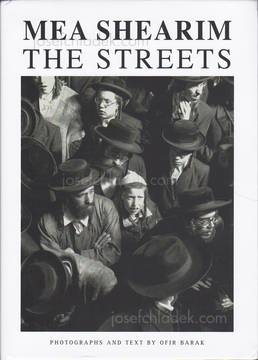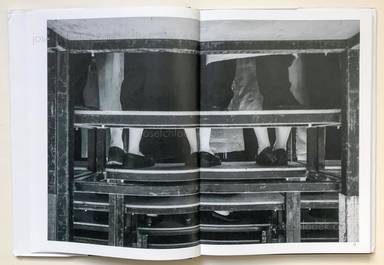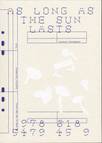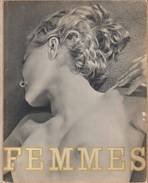Ofir Barak - Mea shearim, Self published, 2017, Jerusalem

Ofir Barak - Mea shearim (Front)

Ofir Barak - Mea shearim (Spine)

Ofir Barak - Mea shearim (Back)

Sample page 1 for book "Ofir Barak – Mea shearim", josefchladek.com

Sample page 2 for book "Ofir Barak – Mea shearim", josefchladek.com

Sample page 3 for book "Ofir Barak – Mea shearim", josefchladek.com

Sample page 4 for book "Ofir Barak – Mea shearim", josefchladek.com

Sample page 5 for book "Ofir Barak – Mea shearim", josefchladek.com

Sample page 6 for book "Ofir Barak – Mea shearim", josefchladek.com

Sample page 7 for book "Ofir Barak – Mea shearim", josefchladek.com

Sample page 8 for book "Ofir Barak – Mea shearim", josefchladek.com

Sample page 9 for book "Ofir Barak – Mea shearim", josefchladek.com

Sample page 10 for book "Ofir Barak – Mea shearim", josefchladek.com

Sample page 11 for book "Ofir Barak – Mea shearim", josefchladek.com

Sample page 12 for book "Ofir Barak – Mea shearim", josefchladek.com

Sample page 13 for book "Ofir Barak – Mea shearim", josefchladek.com

Sample page 14 for book "Ofir Barak – Mea shearim", josefchladek.com

Sample page 15 for book "Ofir Barak – Mea shearim", josefchladek.com

Sample page 16 for book "Ofir Barak – Mea shearim", josefchladek.com

Sample page 17 for book "Ofir Barak – Mea shearim", josefchladek.com

Sample page 18 for book "Ofir Barak – Mea shearim", josefchladek.com
Other books tagged Jews (see all)




Other books tagged Israel (see all)









Other books tagged Religion (see all)







Other books tagged Black & White (see all)









Books to shop at anzenbergergallery-bookshop.com
Hardcover with dust jacket, layout and print by Artplus.
Mea Shearim was established in 1874 as the fifth settlement outside the walls of the Old City of Jerusalem. Its name is derived from a verse in the weekly Torah portion that was read the week the settlement was founded: “Isaac sowed in that land, and in that year he reaped a hundredfold (Mea Shearim); God had blessed him” (Genesis 26:12).
Today, Mea Shearim remains an insular neighborhood in the heart of Jerusalem. Life revolves around strict adherence to Jewish law, prayer, and the study of Jewish religious texts.
Traditions in dress code for men include black frock coats and black hats. Long, black beards cover their faces. Women and girls are urged to wear what is considered modest dress—long skirts, no plunging necklines, and no sleeveless blouses or bare shoulders. Some women wear thick, black stockings all year long, even in summer and married women wear a variety of hair coverings, from wigs to head scarves.
The residents speak Yiddish in their daily lives, as opposed to the Hebrew language spoken by the majority of Israel’s population since they believe that Hebrew is a sacred language to be used only for religious purposes. The only use of Hebrew for residents is in prayer and religious study.
I began to document Mea Shearim in 2014. As I frequented the streets of the settlement, I realized that I would have to appear less like an outsider in order to properly capture the lives of this dynamic community—I would have to blend in. I began altering my appearance and dress accordingly: I wore only black and grew a long beard, I even began to eat there on a regular basis.
Today, after having been a frequent visitor to the settlement for over a year, I am witnessing the accomplishments of my photographic research. I am beginning to see the uniqueness and appeal of this place.
Photography as an art form helps me document and chronicle the ongoing pursuit of the old versus the new, the past versus the present, the everyday life of a city within a city.
https://www.ofirbarak.com/books/
Pages: 164
Place: Jerusalem
Year: 2017
Publisher: Self published
Size: 22 x 30 cm (approx.)




















